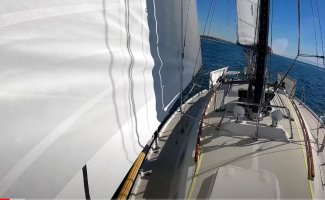I am having new sails made for my E27 and will be sailing the Salish Sea in WA and the coast of BC. My previous late spring through early fall experience here has been one of predominantly lighter winds with occasional strong gusts or fronts coming through. I want to optimize sailcloth weight choice based on these experiences. Sailmakers have suggested weights from 5.93 to 7.45. That’s quite a range of weight differences. The E27 is a heavy displacement, rather slow boat. I need all the lift I can get for sailing in light air. Are there others who have the E27 or a similarly sized boat who can share their experience with sailcloth weight performance in this region?
Additionally, I am leaning strongly toward a 110 jib and a Code C. I think it will be a good combo for the close reaching (N) to a broad reach (S) often encountered in the narrower waterways. Have you utilized a similar combination and to what effect?
I already have a genoa and a storm jib so those don’t need to be considered here.
Thanks, appreciated!
Additionally, I am leaning strongly toward a 110 jib and a Code C. I think it will be a good combo for the close reaching (N) to a broad reach (S) often encountered in the narrower waterways. Have you utilized a similar combination and to what effect?
I already have a genoa and a storm jib so those don’t need to be considered here.
Thanks, appreciated!



